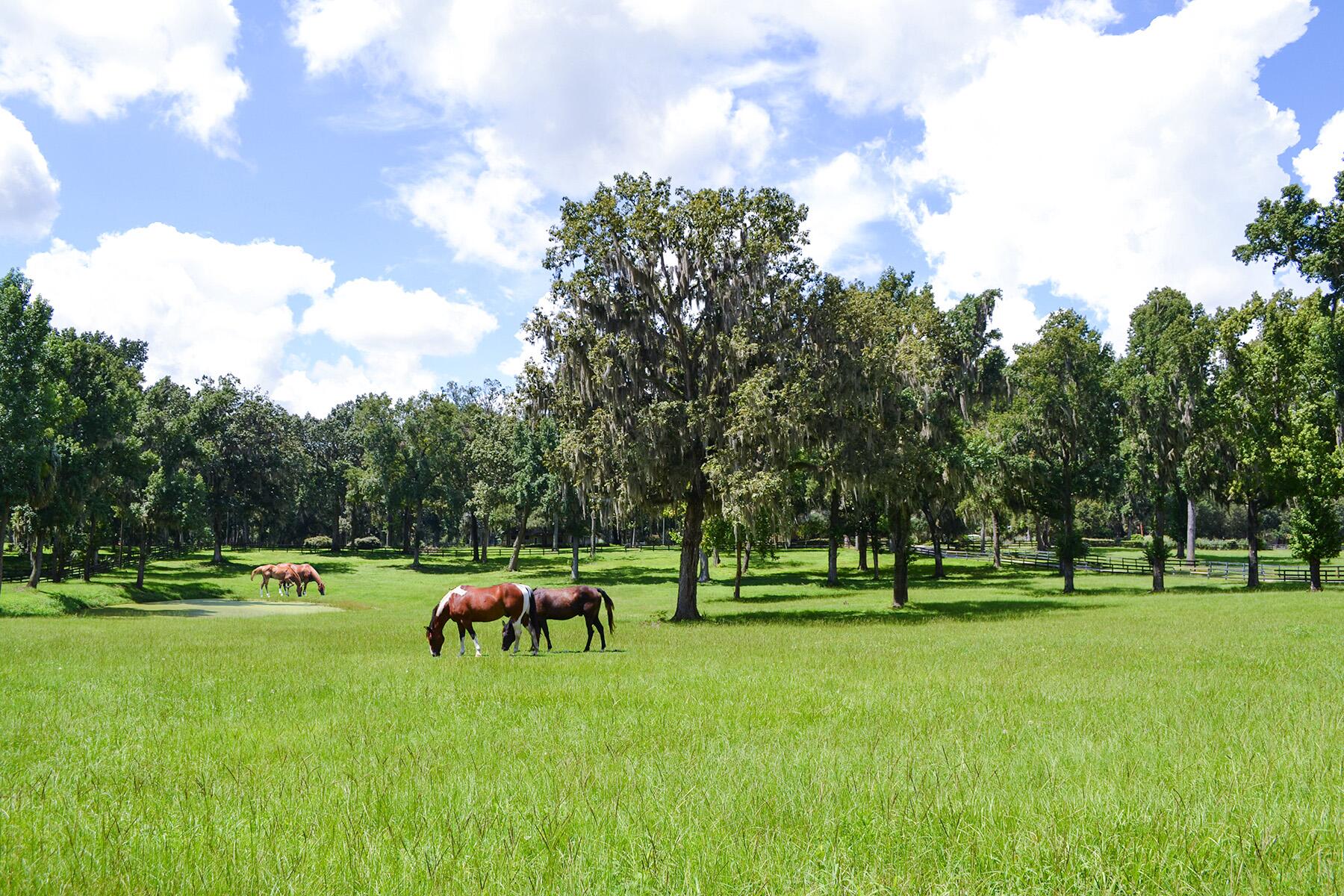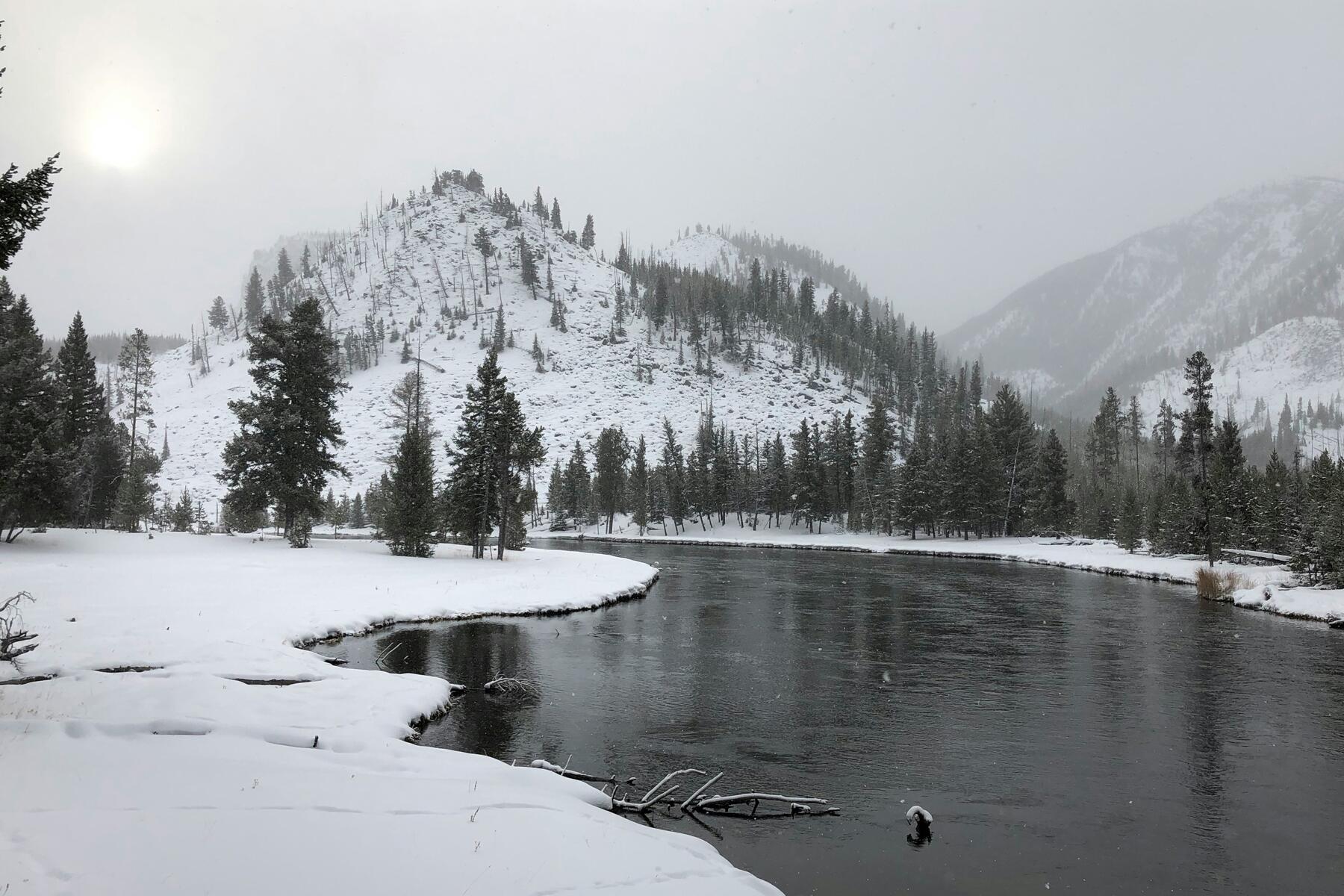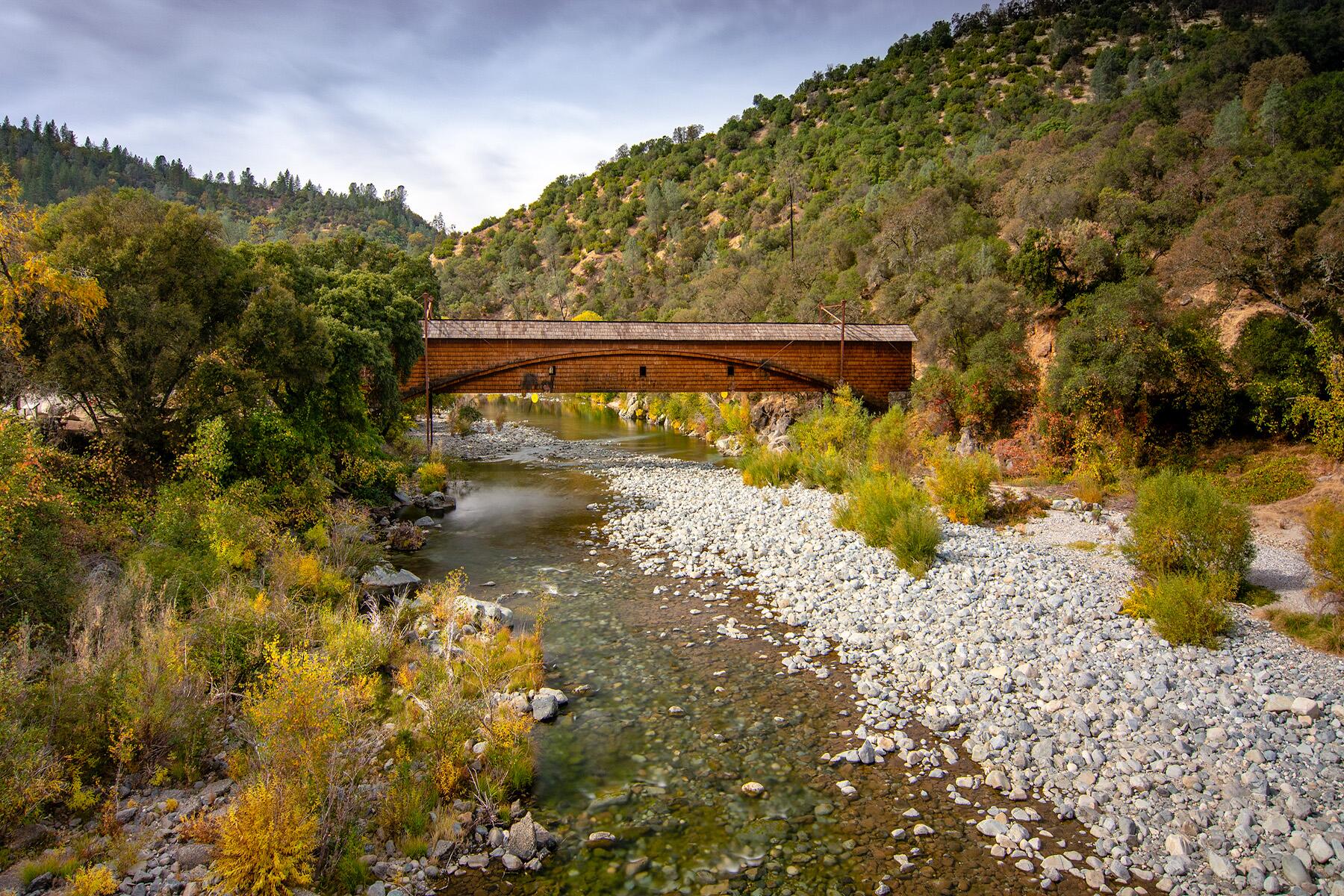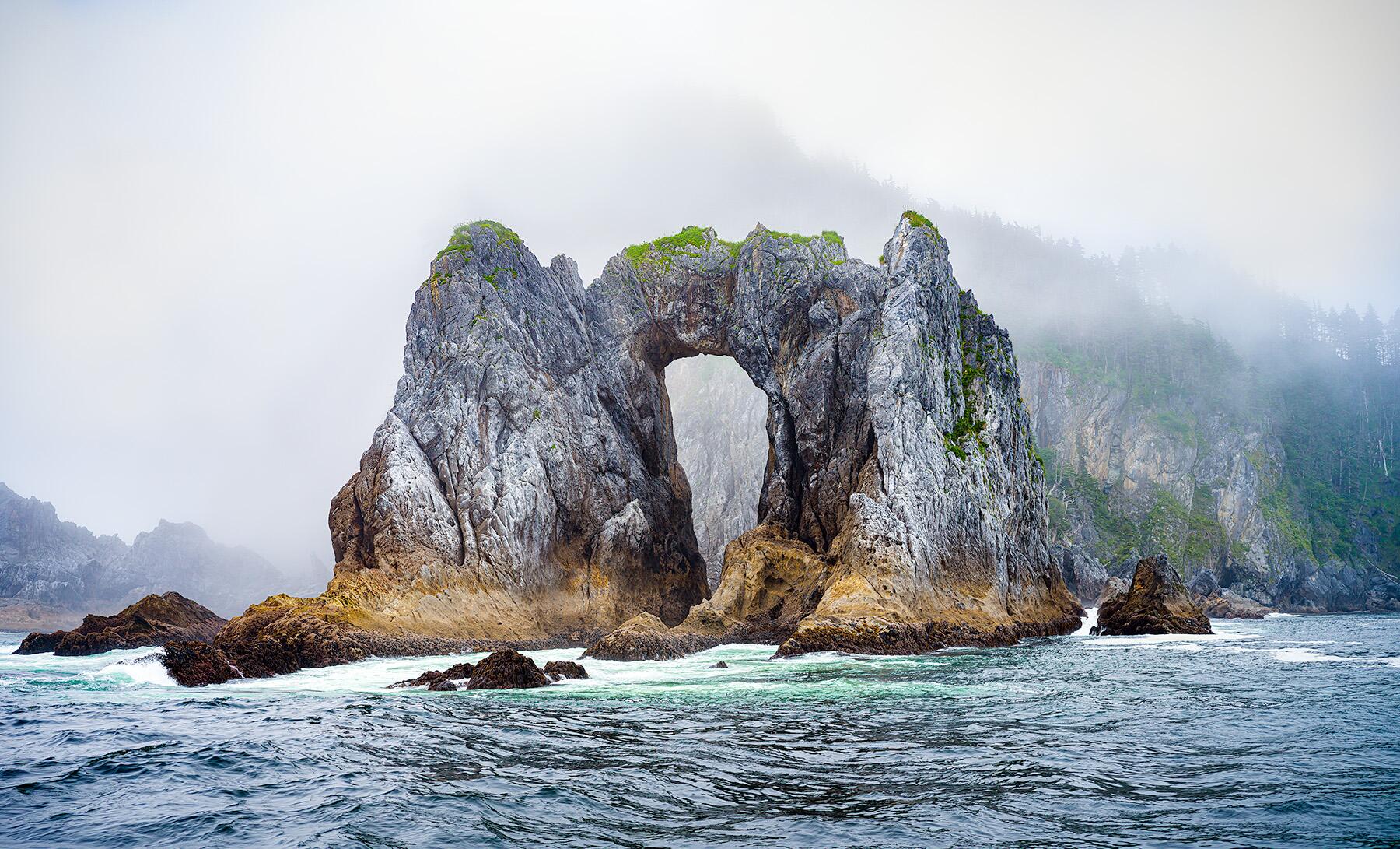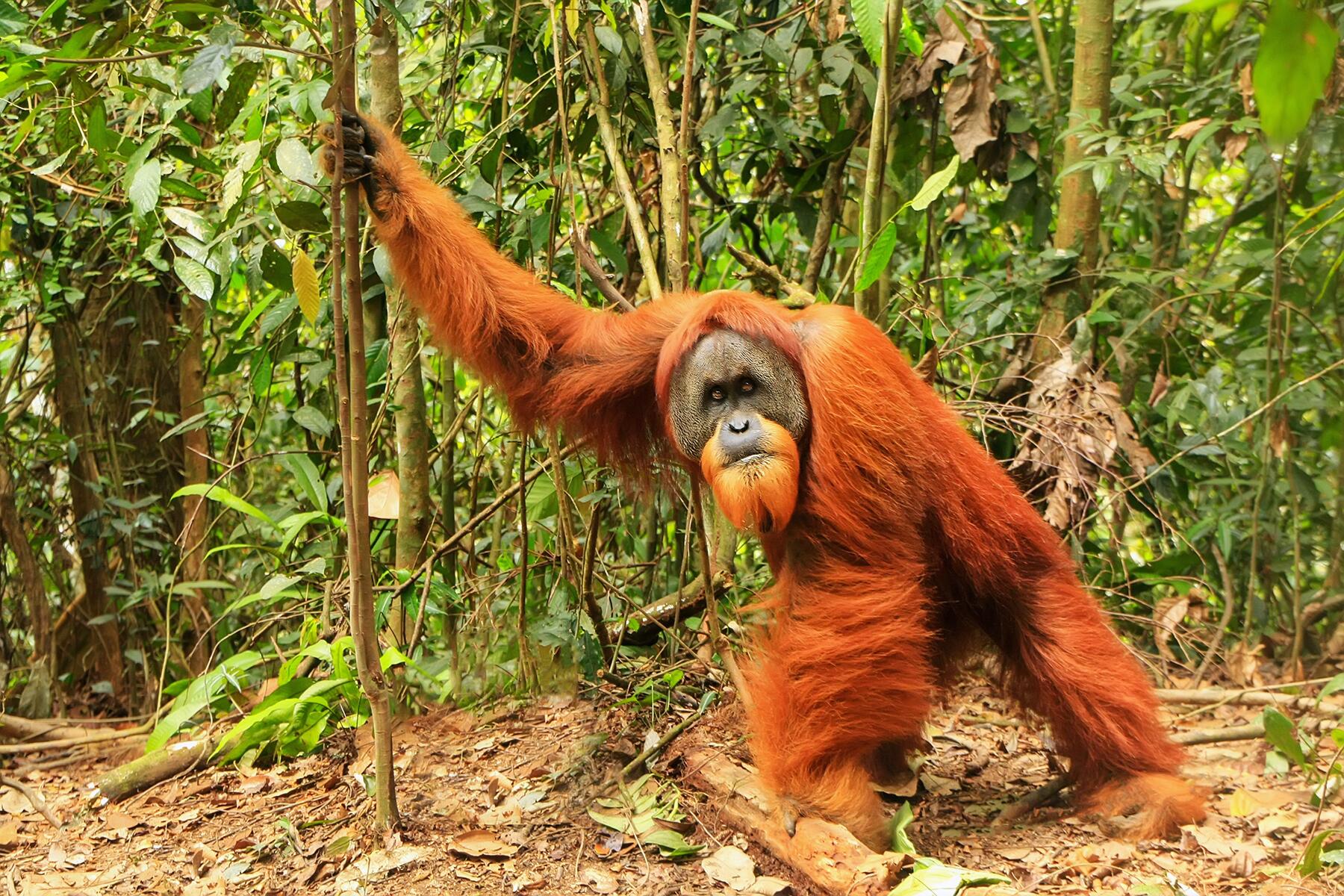From gorillas in Uganda to Komodo Dragons in Indonesia—these are the best national parks for wildlife spotting around the globe.
Animals lovers looking to trek with mountain gorillas, swim with whale sharks, or bask in the presence of one of the world’s big cats should look no further than national parks. These natural sanctuaries offer the best ethical animal encounters in breathtaking natural settings. Not just the parks close to home either–globally, national parks provide an opportunity to connect with nature and witness the lives of animals without human encroachment.
The entire purpose of the parks system, after all, is to preserve and protect spectacular landscapes and critically endangered species. Whether it’s on safari, a DIY hike, or a carefully organized boat excursion—coming across animals in the wild will always trump seeing them confined to a zoo habitat. Choosing to visit national parks helps fund their heroic conservation efforts while also allowing you to step off the well-trodden tourist trail and observe exotic wildlife in truly wild places. These are the 14 most incredible national parks worldwide, offering unique animal encounters worth traveling for.
Gunung Leuser National Park
WHERE: Sumatra, Indonesia
This hilly rainforest is one of two places left in the world where Orangutans roam free and wild. But finding these elusive primates in the dense damp rainforest is a tricky business. The hairy orange great apes are surprisingly nimble, and without the help of an experienced guide, you’ll never spot the large nests perched high in the canopy above your head. Adventurous travelers will brave leeches, thigh-burning trails, and sweat buckets as they tramp through the Northern Sumatra rainforest in search of the highly-intelligent primates. Despite their mysterious nature, sightings are common, and visitors will also likely have the opportunity to spot seven other species of primates, including the endemic and adorable Thomas Leaf Monkey. Considering the scarcity of Orangutans globally, this is a bucket-list experience in a national park that is well worth traveling for.
Bwindi Impenetrable National Park
WHERE: Uganda
With fewer than 1,000 mountain gorillas remaining globally, this volcanic national park is more important than ever. Sitting on the crux of Uganda, Rwanda, and the Democratic Republic of the Congo, the rugged Virunga Mountain Range is home to a third of that remaining gorilla population. The Ugandan portion, also known as Bwindi Impenetrable National Park, is ironically the most accessible region for tourists. Mountain treks here involve difficult hikes up slippery mud-covered slopes in the hopes of spotting families of gorillas grooming among the thick emerald foliage. Safaris here don’t come cheap. For the chance of spotting the rare mountain gorillas, as well as elephants, chimpanzees, and other unique African species, you’ll have to shell out upwards of $1,000 per person for park permits. The hefty price tag goes toward protecting and preserving park boundaries so that the gorillas will always have a home in the wild.
Recommended Fodor’s Video
Tambopata National Park
WHERE: Peru
Tambopata is a national park within the Amazon Rainforest. There’s essentially one reason to visit this particular park rather than one of the more popular regions of the Amazon, and that is macaws. Tambopata contains the world’s largest avian salt-lick. Each morning, flocks of small green parrots and brilliantly bright red and blue Macaws soar to the cliffside river banks to feast on sticky salty clay. Fleets of prehistoric-looking birds cackling from the treetops and hanging from the sheer cliffside are a sight to behold.
Unlike the heavily-touristic Amazonas region of Iquitos, this small slice of the Southwestern Amazon rainforest sees few visitors. Perhaps, because the park’s remote location means taking a 12-hour bus to Puerto Maldonado and a boat up the muddy banks of the Amazon River to your jungle camp, followed by a 4 a.m. wake-up call to beat the birds to the clay. But rainbow-hued parrots aren’t the only wildlife to be seen in this swath of jungle. Jaguars, Capybaras, and Giant River Otters live abundantly within the park boundaries.
Wilpattu National Park
WHERE: Sri Lanka
Elephants, Sloth Bears, Barking Deer, Water Buffalo, Crocodiles, Hornbills: the sheer diversity of animals within the boundaries of Wilpattu National Park is staggering. Sri Lanka is a beachy paradise known for its numerous and questionably ethical elephant sanctuaries. But this national park is one of the few places left on the island nation where you can watch Asian Elephants in their 100% natural state. That’s not the only reason to visit this park. Wilpattu also has a large population of lanky leopards within its boundaries. While the overcrowded Yala National Park in Southern Sri Lanka gets all the glory, Wilpattu, with its much larger size, offers a more natural and relaxed environment for viewing these elegant big cats. With so many large and potentially dangerous animals in this vast park, visitors are required to visit via safari jeep with a guide who will be able to help you spot even the most camouflaged species.
Coiba National Park
WHERE: Panama
Coiba National Park and its “Special Zone of Marine Protection” is a remote underwater paradise with an abundance of endemic wildlife. Sitting off the west coast of Panama, this large island was once a prison for the country’s most dangerous offenders. Today, the entire region is uninhabited by humans and blooming with wildlife—specifically, the marine kind. On a day tour from Santa Catalina to the national park, you can island-hop across pristine beaches fringed with thick jungle and yellowing palms and visit a handful of the best snorkel and dive sites in the world. Enormous Whale Sharks, White-Tipped Reef Sharks, Spinner Dolphins, and swarms of Manta Rays glide through the water just inches from your fingertips.
The ban on commercial fishing and protection zone surrounding the islands has allowed the ocean to remain crystal clear and offer unobscured views of colorful reef fish and sea turtles snacking on coral. Plan some time to visit the handful of isolated islands by land, and you can spot Howler Monkeys, Agouti, Opposum, Deer, and over 30 species of bats.
Corcovado National Park
WHERE: Costa Rica
Costa Rica is a true haven for wildlife. Even the most bustling towns are rimmed with thick humid jungle hiding troupes of Howler Monkeys with bright Scarlett Macaws soaring over the beach. But Corcovado National Park ups the ante. Isolated on the Osa Peninsula, this remote region draws tourists in with the possibility of spotting tapirs, pumas, anteaters, ocelots, jaguars, and of course, the country’s beloved three-toed sloths.
Visitors traveling from the spectacular scenic Drake Bay will arrive via speedboat and spend a day or two hiking leaf-covered national park trails and sleeping in mosquito net-shrouded bunks. Corcovado offers the best and most diverse wildlife viewing in a country globally renowned for its animal experiences. Just be sure to watch your step as this park also has one of the highest densities of Fer de Lance Vipers in the world.
Ranthambore National Park
WHERE: India
With over 100 national parks and 50 tiger reserves in India, national park tourism is steadily growing in the country. For the best chance at spotting the striped Bengal Tiger, you’ll have to venture to Ranthambore National Park deep in the heart of India’s deciduous forest.
Roaming between ancient Indian ruins and one of India’s largest banyan trees, this park is a haven for these big cats, and they don’t always shy away from visitors. You can visit the national park on a several-hour jeep safari in hopes of spotting the notoriously “friendly” but still completely wild tigers. Although sightings are common, as of 2021, there are only 70 big cats within the park boundaries. You might also come across sloth bears, leopards, blackbucks, or striped hyenas during your time in the Ranthambore.
Maasai Mara National Park
WHERE: Kenya
When travelers envision a typical safari, they often conjure images of grazing elephants and sleepy lions lounging on spacious yellow plains intermingling with snorting buffalo and striped zebras. They expect to hop into a jeep and see all the African wildlife of their Lion King-fueled childhood dreams, including lanky giraffes, rhinos, hippos, speeding cheetahs, and an array of gazelles and antelope. But throughout most of Africa, you would be lucky to spot even three of these species on a single excursion. Enter Kenya’s Maasai Mara National Park, the best national park in the whole of Africa for wildlife. This landscape is not only brimming with animals and the stomping ground for highly endangered black rhinos, but it’s also right in the path of the Great Wildebeest Migration. Maasai Mara boats one of the largest concentrations of animals on the entire continent, allowing you to see hundreds of species of African mammals all in one national park.
Komodo Park National Park
WHERE: Flores, Indonesia
Drooling, venomous, tail-whipping dragons live on this remote cluster of islands. Hours off the coast of Flores are three desolate volcanic islands that together make up the boundaries of Komodo National Park. A park explicitly named for its uber-rare inhabitants. This is the only place in the world where you can see Komodo Dragons in the wild.
Getting to the park is an adventure within itself. You’ll spend hours sailing across the turquoise sea, often broken up with snorkel sessions, and embark on a long hike through the brush- all to hopefully see these massive dinosaur-like lizards sleeping in the sunshine. Or, if you’re exceptionally lucky, you can witness these real-life monsters taking down their next meal. Komodo Dragon’s deadly and generally terrifying nature isn’t everyone’s cup of tea, but they are easily one of the most incredible and rare animals to spot in the wild.
Pinnacles National Park
WHERE: United States
A somewhat surprising addition to this list is one of the smallest national parks in the United States. Pinnacles National Park is little more than a handful of hiking trails, caves, and campsites scattered across the rocky California landscape. In addition to its tiny size, Pinnacles is one of the country’s least visited and most underrated parks. Time your visit for early morning or evening, and you’re almost guaranteed to spot one of the rarest birds in the world: the California Condor.
With a global population of less than 300, these birds are considered critically endangered. But nesting high in the red rock pinnacles that give this park its name, you’ll get to see them up close in their natural habitat. Distinguished from the common turkey vulture by white numbered buttons attached by park rangers, these bulky birds aren’t the only wildlife in the park. While hiking through the desert trails and climbing along the pinnacles ridge, you’ll also encounter bobcats, gray foxes, and coyotes.
Yellowstone National Park
WHERE: United States
The neon “paint pots,” powerful geysers, and pink-hued canyon walls of Yellowstone provide a pretty backdrop for the national park’s main attraction: its wildlife. Herds of bison will trickle between the traffic, bull elk bugle outside your hotel window, and gray wolves, grizzly bears, and black bears commonly make appearances in the pre-dawn hours. You can also spot bighorn sheep, lynx, bobcats, red foxes, cougars, river otters, wolverines, mountain goats, and tons of other quintessentially American West species. Don’t worry about seeking out wildlife either. You’ll enjoy driving the winding park roads and walking the short hiking trails surrounding the unique geologic attractions encountering plenty of wildlife passively along the way. Be sure to take in that spectacular scenery because there’s a reason this is America’s most popular national park each year.
Wapusk National Park
WHERE: Canada
Wapusk is a Cree Indigenous word that translates to “polar bear.” You can probably guess where I’m going with this. This subarctic landscape covered in a thick permafrost layer may not be suitable for delicate humans, but over 1,000 hearty polar bears dig out dens here to raise their young. This hostile environment is the best place in the entire world to see and photograph polar bears in the wild.
Visitors to the national park in spring can watch infant cubs emerge from their dens, as well as playful arctic foxes and wolves roam the tundra. But this wildlife experience won’t come easily. Polar bears make this region their home because it is notoriously inaccessible and remote. Luxury safaris cost a fortune but provide an all-inclusive arctic experience with comfortable lodging and transport. Incredibly lucky “budget travelers” can still catch a glimpse of the white bears when they wander from the park borders into neighboring towns, like Churchill, for easy meals or on a day-tour in Canada’s over-land buggies.
Antarctica Protected Area
WHERE: Antarctica
Although not technically a “national park,” the entirety of Antarctica is a protected zone dedicated to preserving the wildlife and delicate ecosystem of the 7th continent. And this glacial landscape has wildlife in abundance. Kayak through ice-clogged seas past fuzzy doe-eyed Minke Seals, marvel at massive colonies of dapper Emporer Penguins, and witness the crash of a humpback’s tail. Although your wildlife sightings will likely be limited to varietals of seabirds, seals, and whales, the frigid alien landscape makes this one of the most interesting animal environments to explore. Especially considering most of these animals can’t be seen anywhere else in the world. Antarctic expeditions are expensive, but to be among the select few travelers that glide through Drake’s Passage at the end of the world is truly an accomplishment.
Galapagos National Park
WHERE: Ecuador
Since Darwin first began categorizing the strange species on these volcanic islands, wildlife enthusiasts have been fascinated. Hundreds of endemic species of both flora and fauna manage to eke out a living on these rugged islands. Surprisingly, we humans have done a pretty good job of preserving them. Or, at the very least, staying out of their way. From the moment you set foot on the archipelago, you’ll be bombarded with sightings of diving marine iguanas, sea lions sleeping on park benches, and 100-year-old tortoises. After all, these remote islands sit high on avid travelers’ bucket lists for a reason. Most visitors to this vast national park will embark on a multi-day cruise between islands photographing colorful seabirds, blubbery seals, and the surprisingly nimble Galapagos penguins.
